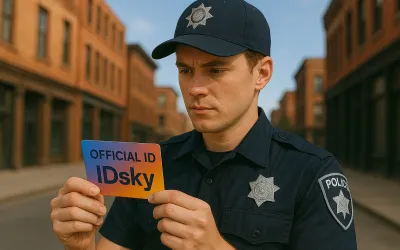🇨🇦 Why So Many People Use Fake ID Canada
In Canada, the use of fake identification (ID) is more common than many people might expect — particularly among teenagers and young adults. Whether it’s for buying alcohol, entering clubs, or other reasons, fake IDs continue to circulate despite being illegal and risky. So why do so many Canadians still turn to fake identification?
Let’s take a closer look.
🧑🎓 1. The Legal Drinking Age
One of the biggest reasons fake IDs are popular in Canada is the legal drinking age. In most provinces (like Ontario, British Columbia, and Alberta), the legal drinking age is 19. In Quebec, Manitoba, and Alberta, it’s 18.
Many teenagers and university freshmen — especially those just a year or two below the limit — use fake IDs to buy alcohol or get into bars and clubs where access is restricted by age.
🎉 2. Social Pressure and Nightlife Culture
Social events, especially in high school or early university years, often involve alcohol and nightlife. Many underage students feel left out when they can’t join friends at clubs, bars, or parties that require legal ID.
Fake IDs become a tool to “keep up” with peers Many feel that “everyone’s doing it,” which normalizes the risk .Some even see using fake IDs as a kind of rite of passage
🧾 3. Ease of Access Online
Fake IDs have become easier to get thanks to:
IDsky.ph Websites that promise “scannable” or “hologram-quality” cards .Sellers advertising through Snapchat, . Instagram, or Reddit .Group discounts for bulk orders among friends.These online platforms give the impression that fake IDs are easy to obtain and safe to use — which is misleading.
🔒 4. Loopholes and Inconsistent Enforcement
Some provinces are stricter than others when it comes to checking IDs. In cities with lots of nightlife, enforcement may vary depending on the venue, the staff, and the technology they use. Some bars still rely on visual checks instead of scanners
✅ Final Thoughts
Fake IDs may seem like a harmless way to enjoy adult freedoms a little early, but they come with real dangers — both legal and personal. If you're underage, the best choice is to wait until you’re legally allowed to drink or access certain spaces. And if you're thinking of buying a fake ID online — remember IDSKY.PH Smart choices now protect your freedom later.
How Canadian IDs Fight Forgery: A Guide to Their Security Features
In Canada, government-issued IDs — such as driver’s licences, provincial ID cards, and passports — are essential for proving identity, age, and citizenship. To prevent forgery, identity theft, and fraud, these IDs are designed with sophisticated security features. These anti-counterfeiting measures are not just visual — they often include advanced materials, technology, and design techniques.
Here’s a breakdown of the key security features used in Canadian identification documents.
🪪 1. IDSKY Holograms and Optical Variable Devices (OVDs)
Most Canadian IDs include holographic elements that shift in colour or design when tilted. For example, Ontario driver’s licences include a hologram of a trillium flower (the provincial symbol) that changes under different angles. These holograms are difficult to copy or print using regular materials.
🔎 2. IDSKY Microtext and Fine-Line Printing
Many Canadian IDs use microtext — extremely small letters that are readable only under magnification. Fake ID printers often cannot reproduce such fine details accurately. Fine-line background patterns are also designed to break apart or blur when scanned, copied, or reprinted.
💡 3. IDSKY UV Features (Ultraviolet Light)
Under a blacklight (UV light), legitimate Canadian IDs reveal hidden images, text, or patterns that are invisible in normal lighting. Ontario, British Columbia, Alberta, and other provinces have distinct UV overlays. These features are used by law enforcement, bouncers, and border officers to quickly detect fakes.
🔗 4. IDSKY Barcodes and Magnetic Strips
Most provincial IDs include a PDF417 barcode or magnetic stripe containing encrypted personal information. This data must match the printed information on the card. Police, liquor stores, and border agents often scan this to verify ID authenticity. Many fake IDs have barcodes that fail to scan or show mismatched data.
🖼️ 5. IDSKY Ghost Images and Secondary Photos
Some Canadian IDs, such as driver’s licences, include a smaller, transparent version of the photo (ghost image) beside the main one. This ghost image is embedded in the card’s laminate and is hard to alter without damaging the card.
🛡️ 6. IDSKY Raised Text and Tactile Features
Certain parts of a Fakeidcanada.com, like the cardholder’s name or birthdate, may be raised slightly or textured. You can feel these features with your fingers. Tactile printing helps the visually impaired and also deters forgery, as standard printers can’t replicate the feel.
🌐 7. IDSKY Digital Watermarks and Embedded Images
Many provinces embed watermarks or digital images inside the card layers, visible only when held up to light. These features are added during the manufacturing process and cannot be replicated with basic tools. For example, you might see a provincial symbol, security icon, or portrait outline within the card itself.




